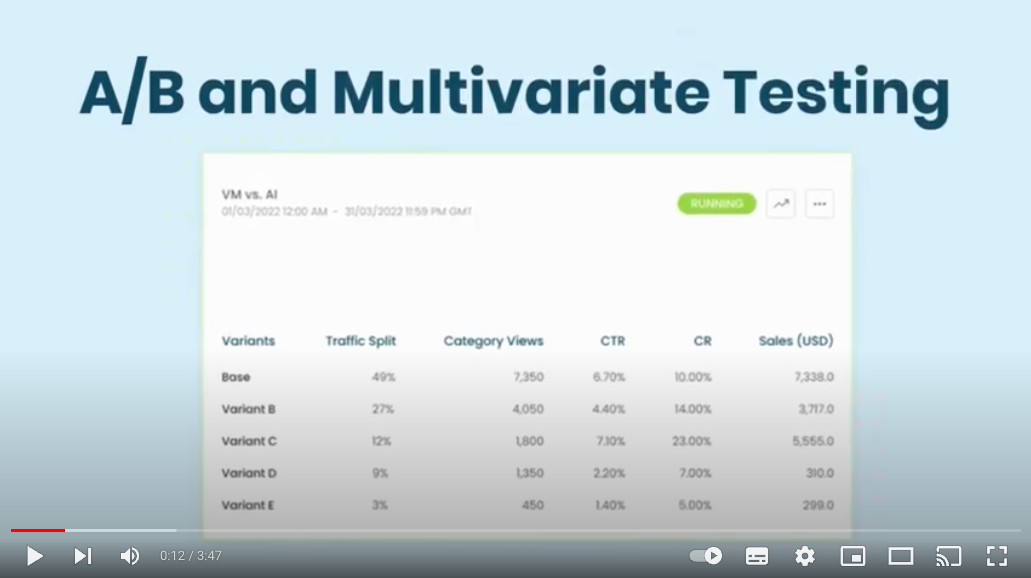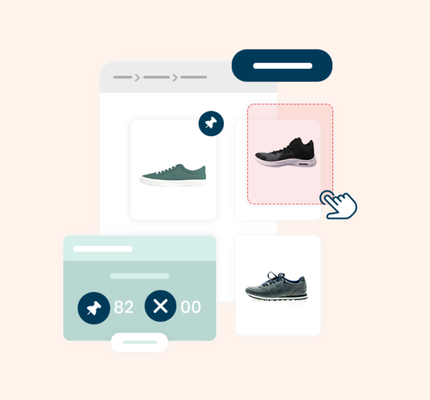Blog
Feature release: A/B Testing Merchandising Strategies with Klevu
Relying on AI to make decisions on what your customers see online can feel like a leap of faith. Have you ever wished that you could know for sure what merchandising strategies are working?
You can.
Watch the video of this article on YouTube >

A/B Testing within the Klevu’s Smart Category Merchandising provides you with data driven insights – so that you can trust that you’re using the best merchandising strategy for your ecommerce store.
For inspiration on how to use Klevu as part of your conversion rate optimisation strategies take a look at the following A/B testing strategies.
1. Human versus machine
This scenario compares your manual marketing efforts versus the continuous machine learning of the Klevu platform. It’s a great way to learn from your customers behaviour and minimise the manual involvement of long-term merchandising initiatives.
Within the global Merchant Center, Klevu’s AI is set as a simple test variant against the current merchandising. Continue to build and manage your category merchandising as usual. Half the site visitors will see the Manage Merchandising, and the other half will receive results based on the system’s machine learning.
2. Clean Slate
Multivariate testing can allow several new strategies to be applied in parallel.
It is perfect for a new category or the first week of a campaign. Or to overhaul your strategy quickly, without loss of the current merchandising setup. Simply build out your merchandising rules per variant – set the traffic balance to exclude your existing rules and then distribute equally amongst the new variants. Now your visitors will be equally distributed on your new setup. When the test completes, you can elect to apply the winning variant as the default rules or simply revert to the original merchandising. You can test up to five brand new strategies at the same time.
3. A change will do you good
Test your categories potential by comparing the old faithful current merchandising versus a brand new merchandising strategy. This is a great way to clear out the cobwebs of heavily merchandised categories or confirm an existing strategy is the right one.
You’ll create brand-new merchandising strategy and put head-to-head with the existing rule set. The distribution will be kept at a fifty-fifty split for the next few weeks, knowing that at any time you can stop the test and default back to the existing rule set. If however it becomes apparent that the new rule set has potential, you can export this for use in future testing.
4. Something old something new
Another good test of merchandising performance is to pit the default rules against those same rules with just one new rule or modification. This is an essential strategy for continuous improvement. For example you could try manually pinning a few items to the top spots on the category listing page. Maybe these are seasonal items, or perhaps there’s another reason you’re trying to promote their exposure.
The strategy is to make only one change. Next you want to adjust the distribution to a seventy/thirty split of traffic, to give these items and advantage. If you see them selling, you can go ahead and incorporate this aspect into the default merchandising. Alternatively you can stop the test and readjust in just a few clicks.
Klevu Category Merchandising Customers can experiment with different merchandising strategies – allowing real, tangible testing of AI versus other strategies.
If you’d like more guidance on incorporating A/B testing into your merchandising strategy, book a demo.


